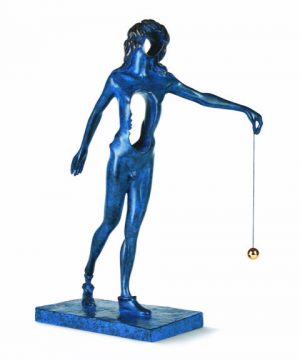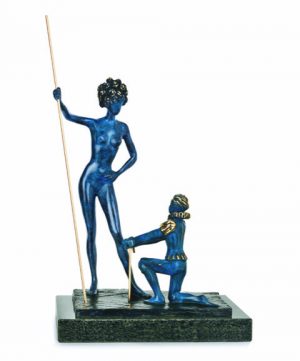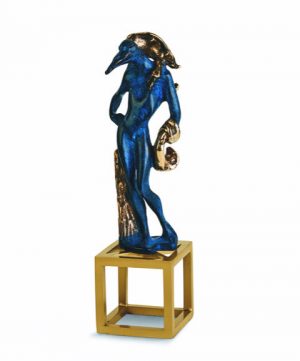Salvador Dalí reinvents and twists a classic religious depiction through an unusual surrealistic interpretation; in his unique way he alters the traditional image of God and the Divine Trinity.
In this sculpture, Dalí wished to illustrate the oneness of God and the Divine Trinity of the Christian dogma. At the center of the artwork, we see a giant thumb reaching upwards. The strength and supremacy of God the Father is represented by the thumb from which all life emerges, symbolized by the young branches.
To the right of this divine being stands humanity: a man-figure bursting with life’s vitality which represents the Son of God. He directs his branches yet again upwards but is also rooted to the earth.
On the left of the Creator, the presence of the winged-figure represents the Holy Spirit. The angel is depicted in a meditative act, his chin resting on his hand and his wing supported by a crutch. The figures of angels, reoccurring in Dalí’s oeuvre, often borrow traits of Gala, and they represent for Dalí, purity and nobility. He appears to be contemplating the crack in God’s facade, a mortal flaw exposing the brickwork within.
Date: conceived in 1977, first cast in 1984
Material: bronze
Technique: lost wax process
Edition size : 350 + 35 EA
Height : 44 cm
Edition : patina green
Maquette: original gouache, Vision of the Angel, 1977
Direct intervention (created by Dalí): the idea, image, and original maquette
Indirect intervention (created by artisans): lost wax process and patina






